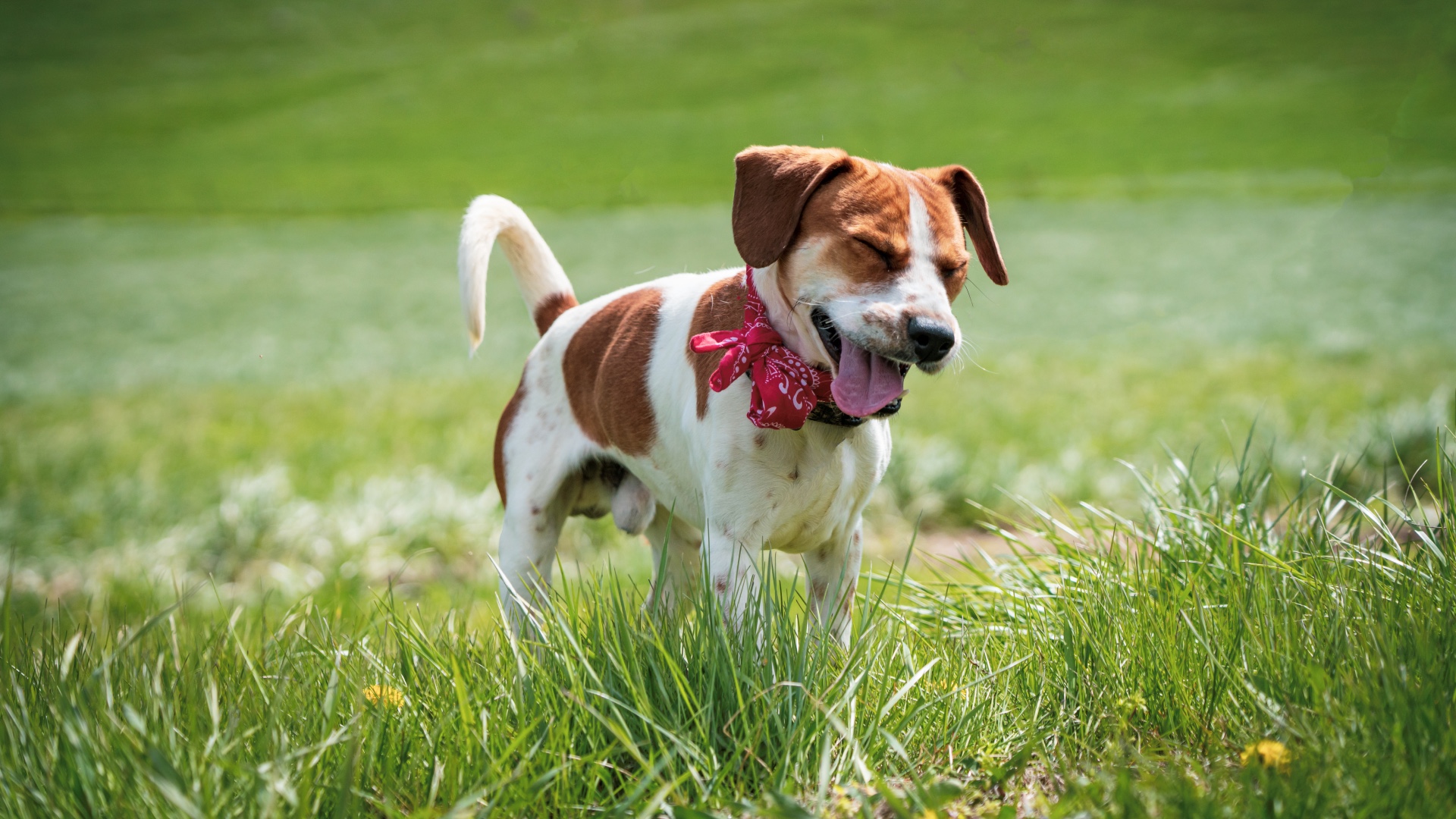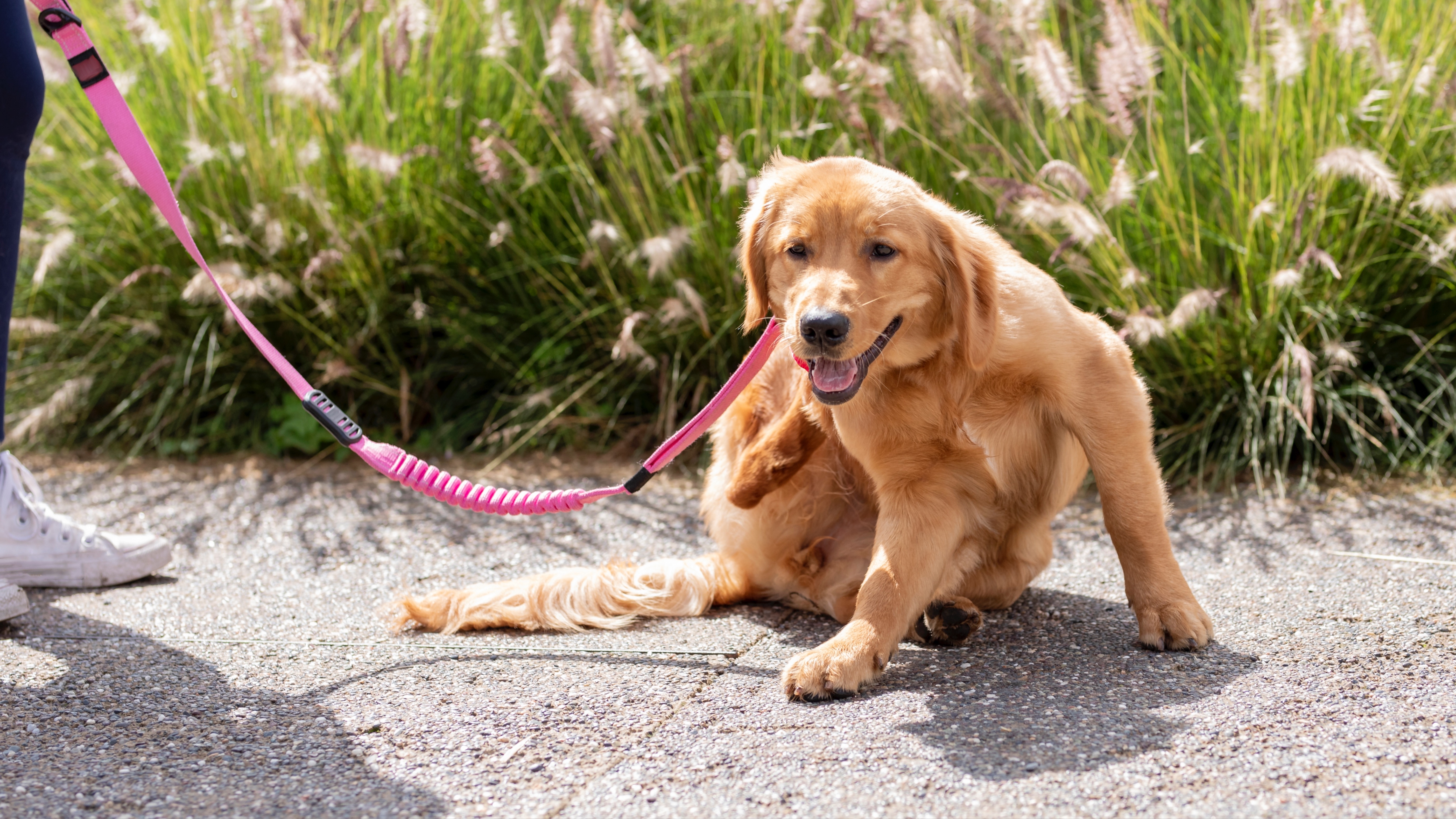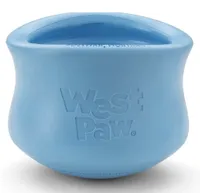Vet reveals how to reduce hay fever symptoms in your dog (plus the signs and symptoms to look out for)
Yup, dogs can get hay fever too, and here’s what you need to know.

For many of us, hay fever is one of the worst parts of summer. The sniffing, the sneezing, and the itchy eyes can ruin even the nicest summer afternoon.
But, it’s not just humans who can get hay fever. You might be surprised that other animals can be affected by pollen allergies, too, including our beloved pooches — it could be time to keep those games with the best dog toys indoors for the time being.
How do we know if our pups are experiencing hay fever, however, and how can we help them? Well, Dr. Linda Simon, Pooch & Mutt’s in-house veterinary surgeon, has offered some advice.
Symptoms of hay fever in dogs
• Scratching: Often, hay fever will cause skin irritation in dogs. “If you notice your pup itching, rubbing, or nibbling their paws, eyes, ears, mouth, and other areas of their body, especially after a grassy walk, this could indicate that they’re suffering from an allergic reaction to pollen,” explains Dr. Simon.
• Red, sore, flaky skin: Hay fever can cause red rashes on a dog’s skin. Your pup’s skin might appear sore, particularly in areas that touch the ground more frequently, like their paws, legs, and rear end. Look out for redness around their eyes and face, as well as their armpits and abdomen, too, as this can also be a sign of hay fever.
Meanwhile, their skin could look flaky, the result of excessive licking and rubbing, while your pup could even lose patches of fur. Dr. Simon adds, “Even if their skin looks fine, you should still monitor any excessive itching. Frequent scratching can cause a build-up of bacteria and yeast and lead to skin, ear, and eye infections, so watch your pup closely throughout the summer.”
• Runny eyes and nose: A symptom that many of us know all too well! This isn’t quite as common in dogs, but you might see a watery discharge from your dog’s eyes and nose.
Get the best advice, tips and top tech for your beloved Pets
Dr. Simon advises visiting your vet if there’s persistent discharge, or the discharge looks yellow, green, or cloudy, as this could indicate a more severe issue — such as a blockage or infection.
• Frequent sneezing, coughing, or wheezing: These are also less common in dogs with hay fever, but it’s still important to keep an eye on any sneezing, coughing, or wheezing.
Is your dog sneezing all the time, however? It might mean that there’s another irritation, like dust, or that something is stuck in their nose or throat. Dr. Simon urges, “If you think your dog is experiencing any breathing problems, always contact your vet immediately.”
How to help relieve your dog’s hay fever symptoms

Your poor pup probably isn’t having the happiest time if they’re struggling with hay fever, but there are some things that you can do – even if you can’t totally avoid their exposure to pollen, particularly if you live somewhere more rural!
• Go for a walk early: "The pollen count is much lower early in the morning and late at night once the temperature drops," Dr Simon advises. "If your dog is suffering, try to keep their walks and outdoor activity around these times. When you go out, keep your dog on a lead in grassy areas to stop them from rolling around and covering themselves in pollen.
You can also plan your walks and try to avoid areas with lots of weeds and woodland or grassland areas."
• Mow the lawn regularly: "Mow your grass in your garden regularly to keep it short," says Dr Simon. "Keeping the grass short can also prevent grass seed injuries where seeds attach themselves to your dog's fur and, when undetected, can burrow into the skin. You can also reduce your dog's time spent in the garden."
• Keep doors and windows shut: “During hay fever season, keep windows and doors in your home shut whenever possible,” recommends Dr. Simon, “This will help minimize the indoor pollen count and give your dog some relief.”
• Wash and groom your dog more frequently: Gently wipe your dog after a walk to remove pollen from their paws, face, and fur. Dr. Simon suggests hosing your dog down if it’s a very hot day and your dog likes to play with the hose.
• Vacuum and wash bedding regularly: “Washing our bedding regularly and keeping the house clean is something humans do when suffering from hay fever, but don’t forget about your dog’s bedding too,” says Dr. Simon. This will help reduce the amount of pollen around the house — particularly the areas in which your dog frequents.
• Expose your puppy to a range of pollen: If your dog’s a puppy, research indicates that it can help to expose them to various types of pollen, as this can make them immune to some hay fever symptoms.
• Consider allergy testing: If your pup is finding it really difficult, this might be a good idea. Your vet can examine your dog to find the root cause of the issue, and might advise testing for specific allergens.
“Depending on the outcome, they may suggest immunotherapy — a treatment where your dog is administered with small doses of the allergen on a regular basis to reduce the symptoms of allergies, which can even potentially result in a permanent cure,” explains Dr. Simon. Here are four common allergies in dogs and what you can do about them for more information.
• Try different treatments: Hay fever, unfortunately, can’t be cured. However, there are ways to manage the symptoms, and your vet will be able to offer advice tailored to your dog. There are shampoos, creams, sprays, and drops that can help, as well as steroids for dogs with severe hay fever.
It’s best to avoid giving your dog antihistamines, because they’re not always effective for dogs and some can even be toxic. So, only do this under the direction of your vet.
Hay fever can be really frustrating for humans and dogs alike, but there are plenty of ways to help manage symptoms. If you’d like to know more, you might find these nine tips for coping with allergic pets useful. You might want to read more about eye discharge in dogs.
West Paw Toppl Dog Toy
$23.96 from Chewy
A treat dispensing puzzle that can be filled with kibble, peanut butter, cheese chunks or smashed banana, this toy is ideal for giving your dog's brain a good workout.

Adam is a freelance journalist specialising in pets, music and culture, and mental health and wellbeing. He investigates and writes the large majority of news on PetsRadar, and collaborates with veterinary experts to produce informative pet care content.
Adam has a journalism degree from Southampton Solent University and a masters degree in Magazine Journalism from Cardiff University. He was previously senior editor at dog advice website DogTime.com, and has also written for The Independent, GoodToKnow and Healthline.
He owns two rescue cats, Bunny and Dougie, and has also previously had a rabbit, fish and Roborovski dwarf hamsters.

